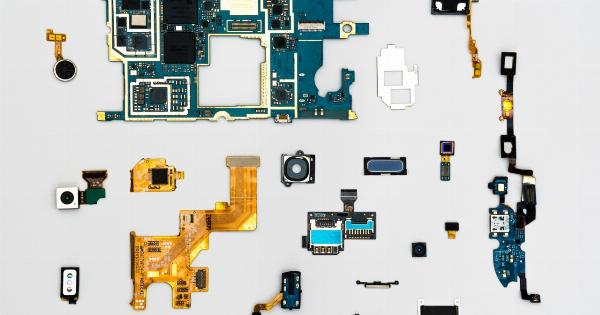Psychiatric treatment has come a long way since its inception, with new and innovative approaches continually emerging.
The field of mental health has seen significant advancements in recent years, particularly in the use of technology to improve treatment outcomes. In this article, we will explore some of the most promising technological advancements in psychiatric treatment and their potential impact on patients and practitioners.
1. Telepsychiatry
Telepsychiatry is a game-changer in the field of mental health. It utilizes technology to provide psychiatric consultations remotely, allowing patients to access care from the comfort of their own homes.
This approach has proven particularly beneficial for individuals living in remote areas with limited access to mental health services.
2. Virtual Reality Therapy
Virtual Reality (VR) therapy offers a new frontier in psychiatric treatment. It involves using VR technology to create simulated environments that help patients confront and overcome their fears and anxieties.
For instance, individuals with phobias can be exposed to virtual situations that gradually desensitize them and reduce their symptoms.
3. Wearable Technology
Wearable devices, such as smartwatches and fitness trackers, have become increasingly popular in recent years.
These devices are now being utilized in the field of psychiatry to monitor patients’ physiological and psychological states in real-time. They can track variables such as heart rate, sleep patterns, and activity levels, providing valuable insights into patients’ well-being and helping clinicians tailor treatment plans accordingly.
4. Artificial Intelligence (AI) in Diagnosis and Treatment
AI has the potential to revolutionize psychiatric treatment. Machine learning algorithms can analyze vast amounts of patient data and identify patterns that may not be apparent to human clinicians.
This can lead to more accurate diagnoses and personalized treatment plans. AI-powered chatbots are also being used to provide mental health support to individuals in need, offering valuable resources and guidance.
5. Neurofeedback Therapy
Neurofeedback therapy utilizes brain-computer interface technology to provide real-time feedback on brainwave activity.
By observing their own brain activity, patients can learn to self-regulate their brainwaves, leading to improvements in symptoms associated with conditions such as ADHD, anxiety, and depression.
6. Smartphone Applications for Mental Health
The widespread use of smartphones has opened up new possibilities for mental health treatment. There is a growing number of mobile applications designed to support individuals with mental health challenges.
These apps provide various features such as mood tracking, guided meditation, and cognitive-behavioral therapy exercises, empowering individuals to actively manage their mental well-being.
7. Transcranial Magnetic Stimulation (TMS)
TMS is a non-invasive procedure that uses magnetic pulses to stimulate specific areas of the brain. It has shown promise in the treatment of conditions such as depression and anxiety.
TMS offers a valuable alternative for individuals who do not respond well to medication or traditional therapy.
8. Gamified Therapy
Engaging patients in therapy can be challenging, especially for children and adolescents. Gamified therapy leverages the inherent motivation and enjoyment of gaming to make therapeutic interventions more appealing.
By integrating therapy techniques into interactive game formats, clinicians can effectively engage and motivate patients while addressing their mental health needs.
9. Biofeedback Techniques
Biofeedback techniques provide patients with real-time information about their physiological and psychological functioning.
By monitoring variables such as heart rate, skin conductance, and muscle tension, individuals can gain better awareness and control over their bodily responses to stress. This can be particularly helpful for conditions such as anxiety disorders and chronic pain.
10. Cognitive Enhancing Technologies
Advancements in cognitive enhancing technologies, such as brain-computer interfaces and transcranial direct current stimulation, offer exciting prospects for improving cognitive function in individuals with conditions such as schizophrenia, ADHD, and traumatic brain injuries. These technologies can help enhance attention, memory, and executive functions.
Conclusion
The field of psychiatric treatment is rapidly evolving, driven by technological advancements that offer new ways to understand and address mental health challenges.
From telepsychiatry and virtual reality therapy to AI-powered diagnosis and wearable technology, these innovative approaches hold immense potential for improving treatment outcomes and expanding access to mental health care. As technology continues to advance, it is critical for researchers, practitioners, and policymakers to stay abreast of these developments and ensure their responsible integration into psychiatric practice.































